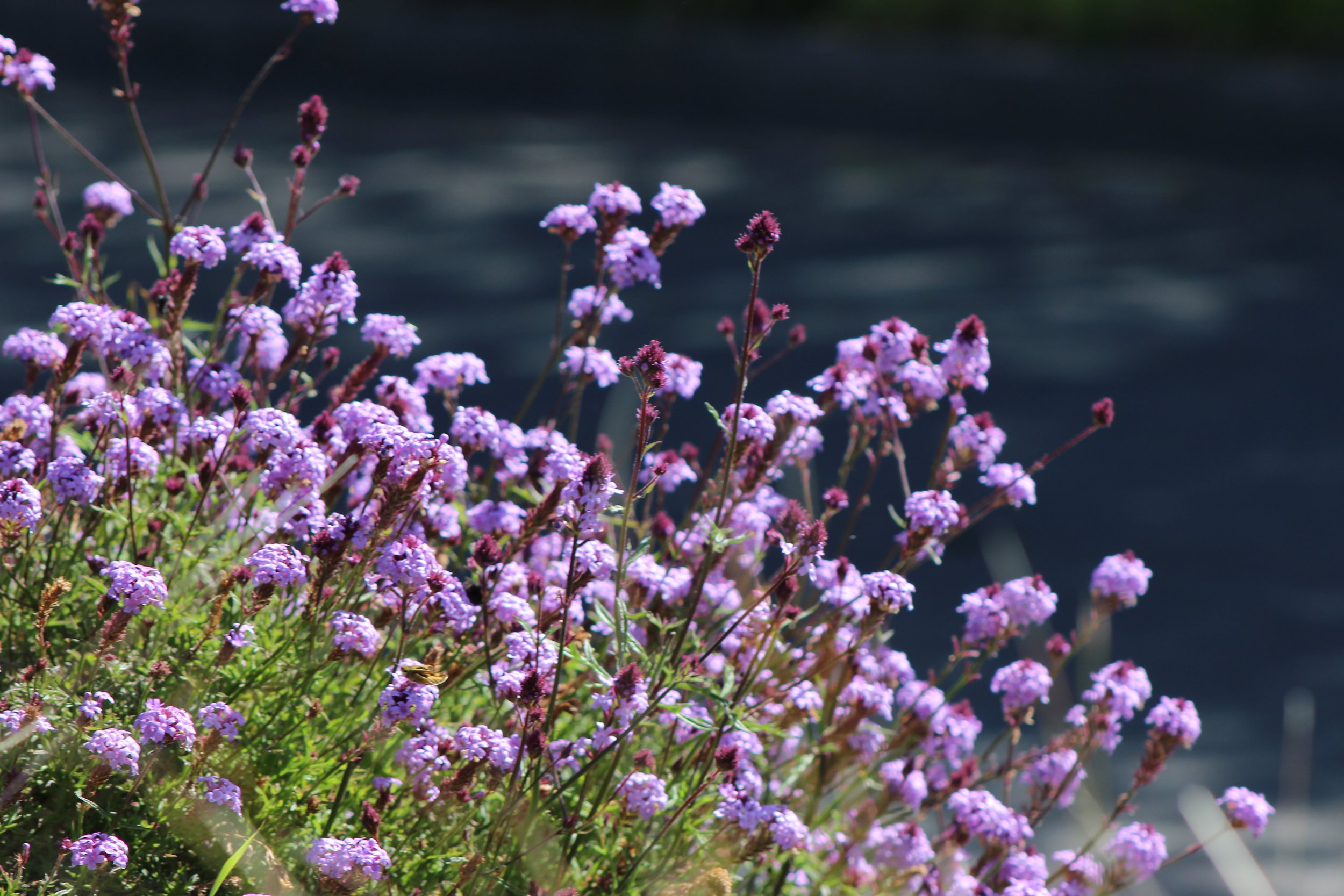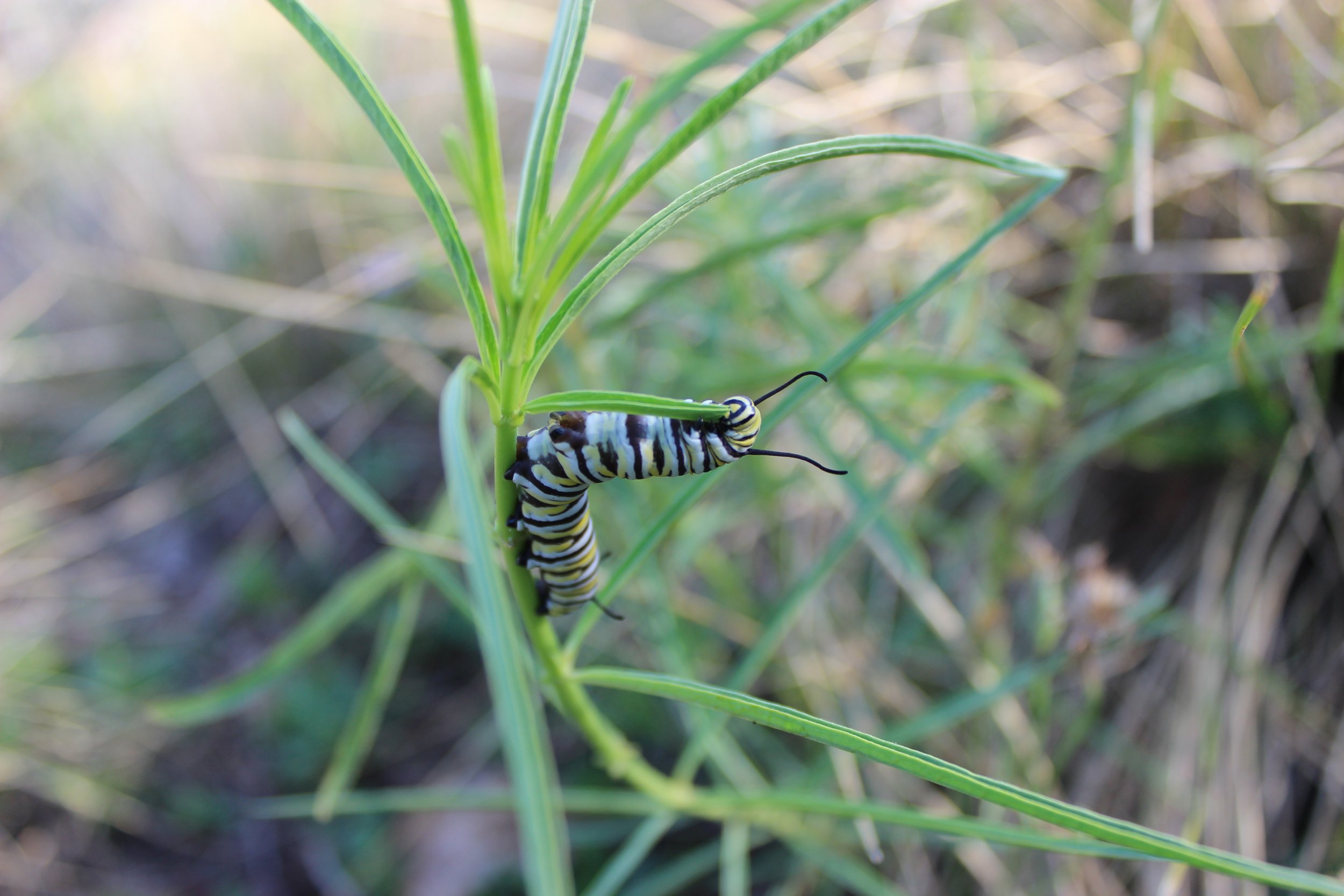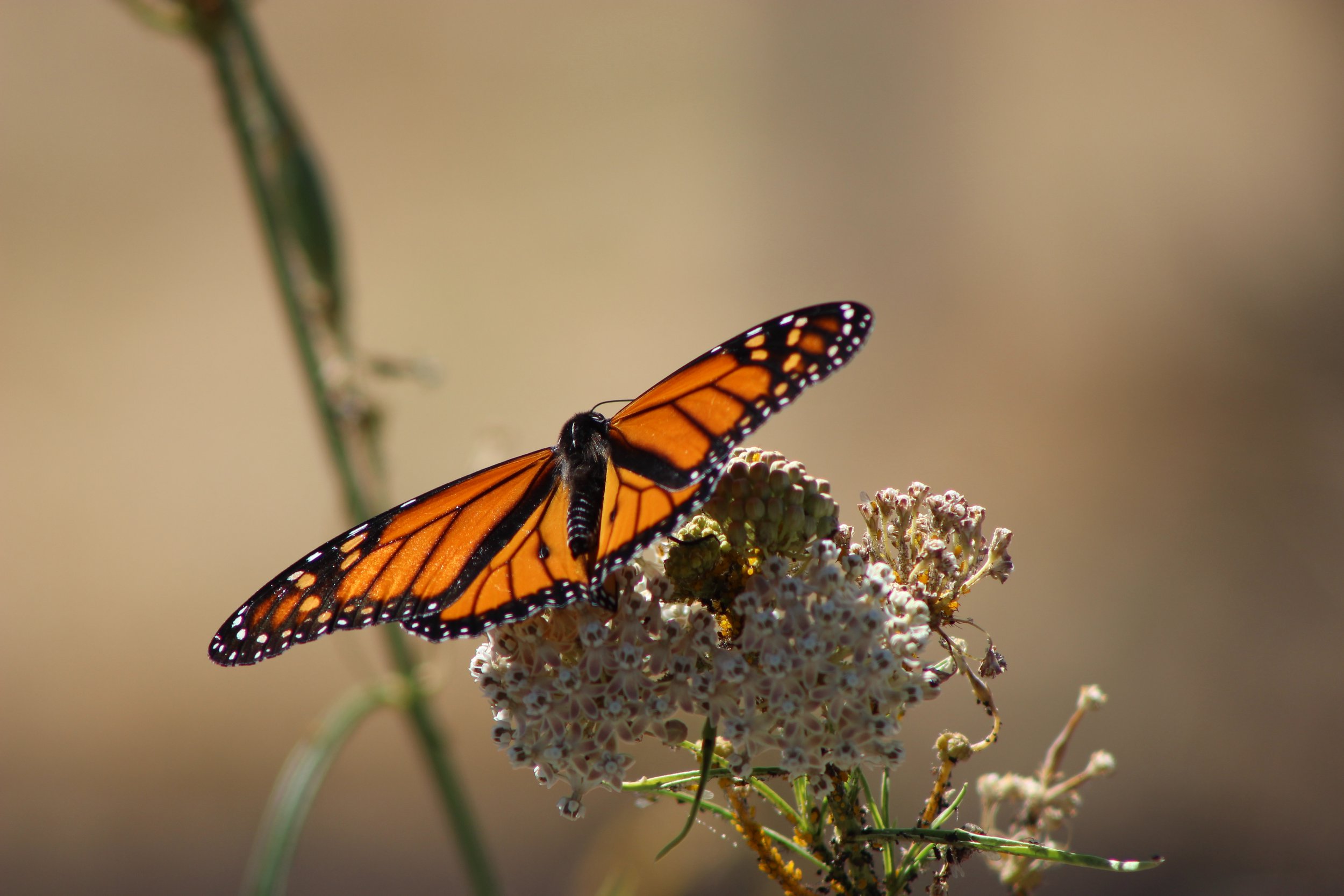Home Garden Habitats: Tips and FAQs
What are pollinators and why are they important?
Pollinators include bees, butterflies, beetles, moths, hummingbirds, and, yes, bats.
Pollinator animals depend on pollen for protein and other nutrients, and nectar for energy. As they move among plants consuming these nutrients, they coincidentally transfer pollen from flower to flower, providing the pollination services needed by plants.
Nearly three quarters of the world’s flowering plants require a pollinator to reproduce, as do two thirds of crop plants that produce our food.
Not all pollinators are gorgeous! This is a hoary bat.
What is the difference between a pollinator garden and a monarch butterfly waystation?
A pollinator garden includes plants designed to attract and support pollinators — bees, butterflies, beetles, bats, moths, and hummingbirds. Pollinator gardens can feature annual as well as perennial plants. Shrubs and bushes can also act as pollinator plants as long as they have flowers for some period of time during the year.
A monarch butterfly waystation is a special type of pollinator garden that provides a place for monarchs to refuel, and lay eggs during their migration journey.
A monarch way station must have clusters of nectar plants — preferably California natives — that offer nectar for the monarchs. A second key ingredient is the presence of milkweed plants. These are the only plants on which the monarchs will lay eggs because they are the only plants that the hungry hungry caterpillars will eat.
MMWG recommends that you plant narrow-leaf or showy milkweed rather than tropical milkweed, which is more likely to attract harmful OE parasites (see more information in the FAQ section).
How do I decide what to plant?
Native milkweed is the most essential plant for a monarch garden. Milkweed that is native to this area includes Narrowleaf and Showy. Do not plant Tropical milkweed, however. Milkweed is discussed more detail in the Habitat Loss section of the website, and in the FAQ section.
A fun way to select plants appropriate for your garden space is to visit some native plant nurseries in your area, or look at the plant lists provided by the Marin Chapter of the California Native Plant Society. They even have a page to show you when each plant starts blooming so that you can have flowers all year round. Another helpful guide to choosing plants is Calscape’s Bay Area Garden Planner. For more ideas about creating a monarch waystation read this article by Marin Master Gardener Alice Cason or check out these two helpful handouts from SPAWN, one on restoring habitat for monarchs in Marin and one on gardening for monarchs and other butterflies.
Here are some popular options for Marin. Photos by Marcia Basalla.
Pink flowering currant
Verbena lilacina de la mina
Cleveland sage
Coast buckwheat
Narrowleaf milkweed
California aster (symphytorichum chilense)
Yarrow
Coyote brush
Gum plant (grindelia lanceolata)
When you create a monarch waystation, it can become a link in a chain of habitats connecting monarch overwintering sites on the coast to inland areas they migrate through during the spring and summer months. Monarchs are able to hopscotch across these areas finding the pollinator plants they need to fuel their journey and milkweed to nourish their caterpillars.
Planting Host Plants to Attract Particular Butterflies
These 24 beautiful butterflies are all found in Marin. Some non-native plants support butterflies, but native plants serve as host plants for 10-100 times more insects than non-native plants.
Compost and Mulch
It’s hard to make the topic of soil seem interesting, but this seven-minute video by the California Water Board is hilarious! Watch it to learn about what makes soil healthy and to understand the benefits of healthy soil for your garden.
When gardeners prepare the soil before planting, the plants will subsequently flourish with little need for fertilizers or pesticides.
MULCH refers to material used to cover the soil surface. The most popular forms of mulch are wood chips, shavings, or bark. Other mulches include seaweed, pine needles, pine cones, hay, straw, cocoa, rice, buckwheat hulls, tree leaves, and grass clippings.
A second type of mulch includes biodegradable geotextiles like cardboard and newspaper. In contrast, synthetic mulches such as rubber and plastic sheeting do not decompose, and eventually break down into microplastics that contaminate the environment.
A third type of mulch includes materials that are natural but not degradable, such as crushed seashells, gravel, pebbles, stone chips, and slate.
COMPOST is a key component of health soil. Compost is made of nitrogen and carbon rich materials such as leaves, grass clippings, manure, and kitchen scraps. Over time, this organic mixture naturally breaks down — or decomposes — and becomes a rich, dark substance ideal for nurturing plants. The ultimate form of recycling, composting returns organic nutrients back to the soil in a form readily absorbed by plants.
Compost loosens up the dense texture of heavy clay soils. It improves sandy soils because organic matter holds water and nutrients better, so the sandy soil does not wash away as quickly.
Organic mulch (Photo: GardenSoft)
Pebble mulch
Sheet mulching involves compost and mulch, and is a good way to improve your soil, attract beneficial bacteria and earthworms, and slow down the growth of weeds.
The basic process is to first add a layer of weeds or grass on top of the soil, then a barrier of cardboard or newspaper, followed by compost, and topped off by a layer of mulch. Now you know why it is also called lasagna gardening….the number of layers is up to the cook, but the image below captures the essence of the recipe.
If you become a sheet mulch aficionado, you can refine this basic recipe in innumerable ways. For more information, read this article by Martha Proctor, a Marin Master Gardener, and this one by Charlotte Torgovitsky.
And Now for the Water
Systems for watering plants can range from the very simple to the very complex. Each system has its pros and cons. Here are the basic options:
Hand water with hose or watering can
Install drip systems in which water goes directly into the soil from small emitters placed near each plant or from an emitter line
Lay a soaker hoses made of porous material on top of the ground that allows water to seep out along the length of the hose.
Use spray or sprinkler systems
For more details, take a look at this article by the Marin Master Gardeners, as well as others on their website.
Overall, drip irrigation is typically seen as the best system for conserving water. The water goes where it is needed, not into the air. Drip systems are slow, so water will not run off the surface of clay soil and will remain longer in sandy soil. Drip irrigation also delivers water to the plant’s roots, encouraging their growth and it does not water the weeds.
On the downside, it can be a headache to move drip systems when gardeners want to make changes to their plantings. New plants may end up alongside more established ones with dissimilar water needs. And it is possible to accidentally damage a tube with a shovel or for a tube to become a chew toy for a gopher or curious pet.
Water should also be provided for the monarchs!
Birds and insects of all kinds need water to survive, so it is a good idea to include a source of water in your home garden. There are many options to choose from, but you don’t need to get fancy. A shallow container of water will do the trick.
Monarchs and other butterflies need moisture but cannot land on water to drink. Instead, they sip liquid from muddy soil, benefitting not only from the water but also absorbing minerals from the soil. This behavior is called “puddling.”
Create a puddling area by digging a wide, shallow depression in the ground and lining it with pond liner. Or just use a shallow dish, adding a 1-2 inch layer of landscape sand mixed with soil along with just enough water to keep it wet. You can also put in a few rocks to serve as a landing and basking area.
Monarchs and mud (photo: Xerces society)
Basic backyard puddling area
FAQs:
Monarchs and Native Plants in Home Gardens
What is rewilding? Can I rewild my garden?
Rewilding is intended to restore ecosystems and reverse biodiversity decline by rebuilding ecosystems where plant and animal life have been modified or destroyed by humans. Rewilding accomplishes these goals by restoring the processes that provide clean air, water, food, and shelter.
The goal of rewilding in large open spaces is to create a self-sustaining ecosystem regulated by natural processes —including predation and competition – all without human interference. Rewilding often involves re-introducing keystone species and ecosystem engineers like wolves and beavers. Large herbivores also play a role; in Scotland, for instance, the tauros, a breed of large cattle, is used to fill in for the now-extinct auroch.
Research on existing rewilding projects finds significantly increased diversity and abundance of flora and fauna, decreased fire risk, and greater carbon sequestration. Read this review of published studies for the details.
More recently, the concept of rewilding has been adapted to home gardening. How is rewilding a home garden different from creating an environmentally-friendly native plant garden? To be sure they share certain features. Both are typically pesticide free. Both avoid conventional lawns, instead focusing on native plants that provide nutrition and habitat to local insects, birds, and mammals. And both often include a water source in the form of a creek, fountain, or pond.
The difference between the two is often a matter of degree. In a rewilded garden, a gardener places an even greater emphasis on supporting flora and fauna and less emphasis on planning and maintaining a conventional look. Symmetry and neatness are de-emphasized in order to create diverse options for nutrition and shelter. For instance, fallen leaves are allowed to remain on the ground, creating natural mulch and affording a hiding spot for insects. For similar reasons, a gardener’s tolerance for weeds may be higher in a rewilded garden. And when their blooming period is over, plants may be left alone rather than removed so that their seed heads can be raided by birds and small mammals throughout the winter.
One thing that differentiates rewilded home gardens from their large scale rewilding counterparts is that the home gardening does not routinely involve reintroduction of keystone species! Northern Pacific rattlesnakes may be native to Marin, but most gardeners would rather not invite them into the garden.
Read this article by Alice Cason for more ideas about rewilding home gardens.
Tauros are descendants of wild herbivores called aurochs, which were commonplace in Europe and the UK for millions of years. By the technique of “back-breeding” the Tauros was created with physical attributes, behavior, and genetics that closely match those of Europe’s original wild aurochs.
The Gray wolf was extirpated from California in the 1920s but is now being re-introduced.
The Northern Pacific rattlesnake is native to Marin and other areas in Northern California.
What kind of milkweed makes the best monarch habitat for home gardens in Marin?
Milkweed is essential to the survival of the monarch. Monarch butterflies will only lay their eggs on milkweed, and monarch caterpillars will only eat milkweed. But it is particularly important to plant native milkweed ONLY!
The best option for monarchs is narrow-leaf milkweed (Asclepias fascicularis), a native of Marin. Showy milkweed (Asclepias speciosa), which is a California native and has been in Marin for a long time, is also considered acceptable in urban and suburban gardens. Both types of milkweed go dormant in the fall, prompting monarch butterflies to head west toward an overwintering site.
In contrast, tropical milkweed (Asclepias curassavica) should not be planted. It doesn’t die back in the winter, and its longevity encourages butterflies to linger inland rather than migrate to overwintering habitats. Tropical milkweed is also more likely than the native species to carry the deadly OE parasite. To learn more, read this article from the Xerces Society for Invertebrate Conservation as well as this one from Monarch Joint Venture.
The CA Department of Food and Agriculture has designated tropical milkweed as a B-rated noxious weed and in 2022, Marin County banned the sale of tropical milkweed in nurseries. If you have tropical milkweed in your garden, it is best to cut it to the ground in the fall, or, better yet, replace it with a California native variety.
Narrowleaf milkweed
Showy milkweed
Is milkweed poisonous to animals or humans?
Milkweed sap contains toxins (cardiac glycosides) that serve a productive function for monarchs. When monarch caterpillars eat milkweed, the toxins from the sap remain in their bodies even after they become butterflies. In fact, monarchs evolved to be brightly colored in order to warn predators that they are dangerous to them. If they do eat a monarch, a bird or other predators typically vomits, and after that they really leave the butterflies alone. According to evolutionary biologist Noah Whiteman, “Toxins are why the monarch can migrate thousands of miles to overwintering spots without getting eaten by predatory birds.” Read more about milkweed toxins here.
People and other large animals are unlikely to have a strong reaction from eating milkweed. But to be on the safe side, teach children not to put milkweed leaves in their mouth. And everyone should avoid touching their eyes if their hands have been in contact with the sap, as it can cause intense inflammation.
Milkweed is not the only plant containing a toxic substance. Other common landscaping plants warrant similar precautions. This includes the leaves of foxgloves and hydrangeas, berries of lantana, and all parts of summer-blooming oleander.
Why are there bugs on my milkweed plants? Are they harmful?
You may not be happy to find anything other than a monarch caterpillar feeding on your milkweed plants. However, it is common to find yellow oleander aphids on milkweed plants. They typically suck the sap from leaves, stems and seed pods but this usually does not kill the plant. You can control them by squishing them with your fingers but be careful not to squish any monarch eggs.
You can also spray them with cold water, but don’t blast them too hard. You don’t want to dislodge the monarch caterpillars or eggs.
Fortunately, the aphid’s natural enemies — including lady beetle adults and larvae, lacewing larvae, soldier beetles, and syrphid fly larvae — will come in and manage the population of bugs eating your milkweed. Read this article to learn about the natural enemies of aphids.
And finally, when you see bugs on your milkweed, don’t spray them with any kind of pesticide. Whatever would kill them is also likely to kill monarch caterpillars.
I live on the coast. Can I plant milkweed?
The most recent guidelines from the Xerces Society advise against planting milkweed if you live within one mile of the coast or one mile from an overwintering site. If monarchs encounter milkweed when they are overwintering along the coast or the bay, it will stimulate them to breed and lay eggs. This depletes their ability to survive the winter. Additionally, in the colder coastal weather, their eggs are less likely to survive and turn into caterpillars. If you live near the coast or the bay, you can cultivate native nectar plants but not milkweed.
I don’t have a large area for plants. What can I do to help pollinators?
Even a few plants will help pollinators. You can grow plants in pots or window boxes.
Another option is to make use of your “hellstrip” — the narrow dirt patch between the edge of the sidewalk and the curb. Reflected heat, foot traffic, poor soil, and irrigation obstacles pose challenges, and they are often home to weeds, dog poop, and wind-blown trash. Do a hellstrip cleanup, put some hearty natives in the space, and see if you can attract some pollinators.
To find which native plants are right for your area, check out the lists provided by the California Native Plant Society and the Marin Master Gardeners.
Can I help the monarchs by raising them in captivity and releasing them?
As the number of monarchs drops lower and lower, it may seem reasonable to breed them in captivity with the goal of releasing them as adults. But the answer is no, don’t do it. The Xerces Society and other monarch groups have concluded that the risks of captive breeding are greater than the benefits. Monarchs reared in captivity are more susceptible to parasites, including Ophryocystis elektroscirrha (OE).
In any case, captive rearing of wildlife is illegal in California. California law (Fish and Game Section 1002) prohibits the taking or possession of wildlife for scientific research, education, or propagation purposes without a valid Scientific Collection Permit (SCP) issued by CDFW.
If you want to read more about captive rearing, take a look at this article by Emma Pelton of the Xerces Society.
It is tempting to protect monarchs by raising them in containers like the one pictured here, but this is not recommended by biologists and is actually prohibited in California!


























